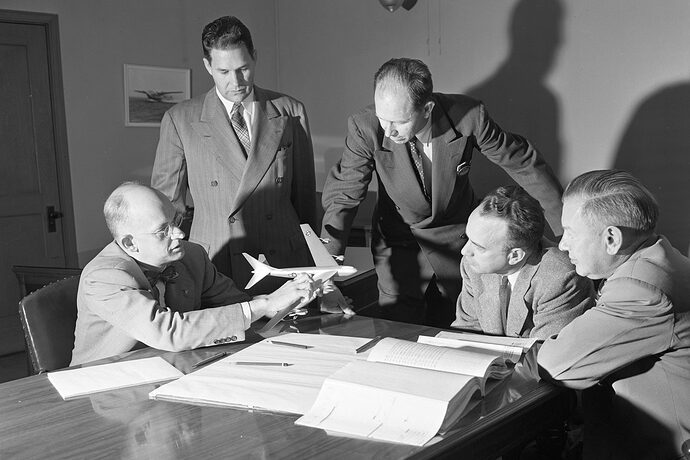“Skunk Works”, by Ben R. Rich & Leo Janos, ISBN 978-0-316-74330-3 (1994)
Ben Rich was the second person to lead Lockheed’s famous Skunk Works division based in Burbank, California, following in the footsteps of Kelly Johnson, the irascible giant of the aeronautical world who had convinced the company to set up a small tight operation to design & manufacture cutting-edge airplanes.
Rich joined Lockheed in 1950 as a young thermodynamicist, rising to CEO of the Skunk Works in 1975. He retired in 1990 and died in 1995. The Skunk Works did business almost entirely with the US Government, producing planes for the CIA and the Air Force – the first US jet fighter, the P-80; the first supersonic jet attack plane, the F-104; the U2 spy plane; the SR-71 Blackbird surveillance aircraft, designed to outperform Soviet missiles by flying at 3 times the speed of sound at heights up to 80,000 feet; the F-117A radar-evading stealth tactical fighter.
In this book, Rich enthusiastically describes the technical challenges the small group at the Skunk Works faced in pushing the limits of aircraft performance and how they overcame them. He builds on that to muse upon the organizational benefits & challenges of a Skunk Works-type of business model, and on the inefficiencies of military contracting. His tale is interspersed with “Other Voices” – interesting short sections in which people from pilots to Secretaries of Defense share some of their experiences.
Rich deeply admired his long-time boss Kelly Johnson, and quotes him, such as on how to manage a business:
“You don’t need Harvard to teach you that it’s more important to listen than to talk. … you’ll never make the grade unless you are decisive: even a timely wrong decision is better than no decision. The final thing you’ll need to know is don’t half-heartedly wound problems – kill them dead”.
And on another occasion:
“Hell, in the main plant, they give raises on the basis of the more people being supervised; I give raises to the guy who supervises least. That means he’s doing more and taking more responsibility.”
An example of the kind of challenge the Skunk Works faced was one that arose when they were building the SR-71 Blackbird – how to find a suitably light material which could withstand the very high skin temperatures generated by flight at Mach 3. The answer was a form of titanium, but the large quantities required were difficult to source. The CIA arranged to purchase from the USSR the material needed for a US plane intended to spy on the USSR.
An important part of Rich’s story relates to the development of radar-avoiding stealth technology, which began with an impenetrable paper published in Russian in 1964 that was apparently ignored in the USSR. In 1975, a young Skunk Works engineer named Denys Overholser read a translation, and realized it provided the key to designing aircraft which would be almost invisible on radar. After much work, this led to the development of the F-117A Nighthawk which saw service in Iraq in 1991.
A disheartening element in Rich’s experiences was the military’s factionalism and resistance to change. The Skunk Works realized their stealth technology could be utilized to make submarines almost undetectable by sonar, and designed a hull to show the US Navy. Navy personnel were not interested – that was not what a submarine should look like.
Also frustrating was the rising burden of bureaucracy over the years. The priority of the growing numbers of government auditors & inspectors was keeping paperwork organized, not delivering a working aircraft. If a manufacturer managed to deliver a plane under budget, it was liable to fines & penalties for having “over-bid”.
One of the consequences of that growing administrative overhead burden is that building a new aircraft has become increasingly costly, and thus fewer new planes are authorized for development. In the 1950s, 49 new aircraft were introduced; in the 1980s, only 7; and by the 1990s, it was down to 3. Rich laments that in his 40 years in the industry, he worked on 27 different aircraft, whereas a young engineer joining the industry today will be lucky to build even one. It becomes increasingly difficult for the industry to maintain the necessary engineering skills and technological capabilities.
This is a well-told fast-paced tale about both the human and the technological sides of cutting-edge development in the real world of business risks and political vicissitudes. Thought-provoking too, in a world in which the US is allowing its’ former technical lead to slip away.
